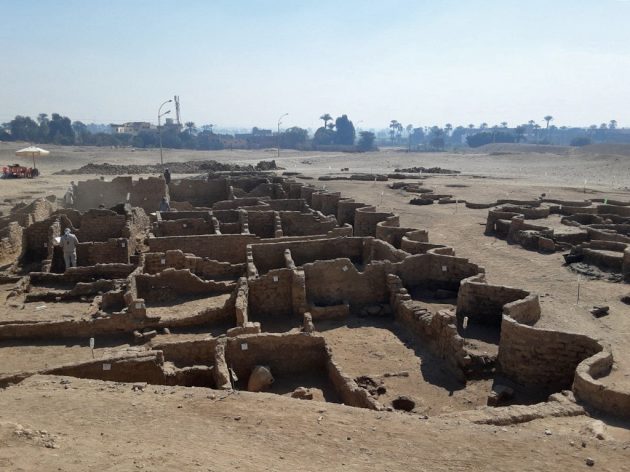3,000-year-old ‘lost golden city’ discovered in Egypt

Archaeologists have found what is believed to be the largest ancient city found in Egypt, buried under sand for millennia. Experts say that it is one of the most important finds since the unearthing of Tutankhamun’s tomb, according to The Guardian. The city is known as “The Rise of Aten.”
The well-known Egyptologist Zahi Hawass announced the discovery of the “lost golden city,” 3,000 years old, saying the site was uncovered near Luxor, home of the Valley of the Kings.
According to Hawass, the city dates to the reign of the pharaoh Amenhotep III and continued to be used by Tutankhamun and Ay.
Hawass said that many foreign missions searched for this city and never found it. A group of Egyptian archaeologists began excavations in September 2020, between the temples of Ramses III and Amenhotep III near Luxor, 500km (300 miles) south of the capital, Cairo.
“Within weeks, to the team’s great surprise, formations of mud bricks began to appear in all directions,” the archeologists said in a statement. After seven months of excavations, several neighborhoods have been uncovered, including a bakery complete with ovens and storage pottery, as well as administrative and residential districts.
3,000-year-old 'lost golden city' of ancient Egypt discovered. It is believed to be the largest ancient city found in Egypt, buried under sand for millennia, which experts said was one of the most important finds since the unearthing of Tutankhamun’s tomb. pic.twitter.com/R8Qimp5nQz
— Africa Info 247 (@SmartAtuadi) April 9, 2021
The researchers reported that they found the city in a good condition of preservation, with almost complete walls, and with rooms filled with tools of daily life. Items of jewelry such as rings have been unearthed, along with colored pottery vessels, scarab beetle amulets, and mud bricks bearing the seals of Amenhotep III.
Archaeologists believe that this discovery will give “a rare glimpse into the life of the Ancient Egyptians at the time where the empire was at his wealthiest”. The mission also hopes to uncover untouched tombs filled with treasures.
Photo: AFP / Egyptian Ministry of Antiquities






